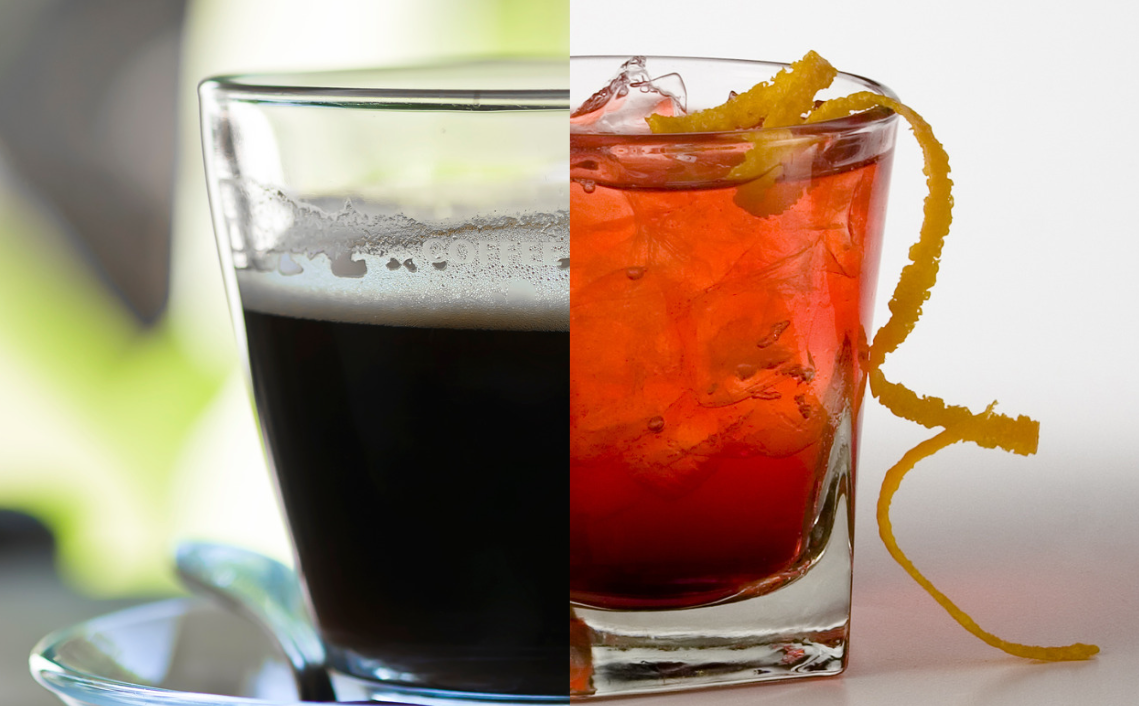Do you speak espresso? If not, don't worry — I’m about to teach you how to order coffee in Italy like a local. ✌️
Before we begin, it’s important to explain that Italians call all cafes “bars”. You go to a bar to order a coffee...I know it already sounds confusing but hey — that’s the beauty of traveling and visiting new places…things are different from back home and although it may be disorienting at first, it’s really part of the fun of getting out of the comfort zone.
“Bar” in Italy is a rather generic term to refer to the spectrum that goes from a pastry shop to a full-on bar with hard-liquor. And that’s simply because, no matter where you go in Italy, you will always find a coffee machine in any bar or restaurant, and you will always find hard liquor in any cafe or pastry shop. What can I say, we love coffee and booze (and obviously pastries).

Secondly, although it’s internationally called “espresso” — we in Italy informally call it simply “caffè”. Remember the double f and the accent on the e. Caffè. If you ask for “un caffè” you will always get an espresso in Italy.
If it’s a small and casual cafe or bar, it's customary to stand at the counter and order your coffee there. You will typically pay for your coffee before you receive it, and you can enjoy it standing at the bar. Sometimes, you first need to queue in front of the cash register, pay for the coffee upfront, get a paper receipt and then move the counter to place your order with a barista.
However, don’t get too stressed out about it. Most cafes also do table service, so they’ll take your order there and most likely you’ll pay at the table upon placing or receiving your order. Now, a note of patience…and god knows I’m not a patient person…especially after having lived abroad for a long time. How do I put it diplomatically…service in Italy can sometimes be a bit…slow(er) than what you’re used to…but hey, that’s part of the charm right. La dolce vita…I guess…and hopefully you’re on vacation and not in a hurry.
If you are in a hurry…coffee vending machines in airports, train stations and public places like schools and hospitals actually make really good coffee…just don’t tell my fellow citizens I ever mentioned that!!

🗣️ Here’s what you say to order an espresso:
“Salve, un caffè per favore!” (Hi (formal) an espresso please). Salve is great because unlike buongiorno, buon pomeriggio or buonasera, you can use it at any time of day. It’s polite and formal but not too much.
Or you can be even more polite and say “Salve, posso avere un caffè per favore?” (Hi (formal) may I have an espresso please?)
Watch out for different variations of espresso. The default would be “corto” or “liscio” (short and smooth, meaning just a shot of plain espresso, not mixed with anything else like milk, foam or alcohol…yes you heard correctly, we’ll get to that!)
We don’t do “double shots” in Italy, but it is perfectly acceptable to ask for a “lungo” (a long shot…and you’ll still be surprised how small of a coffee that is when compared to what you drink outside of Italy).
You can ask like this: “Un caffè lungo per favore” or “Posso avere un caffè lungo per favore?”
If you’d like your espresso with milk, that’s when things get more interesting. Don’t ask for a “latte” in Italy…or you’ll get a glass of milk. Instead, ask for “un caffè macchiato” (Macchiato — which literally means “stained”). Un macchiato is an espresso with a scoop of milk foam. You can get even more specific and ask for “un macchiato caldo” if you want your milk foam to be warm, or “un macchiato freddo” if you want it to be cold. Don’t be fooled by the sound - caldo doesn’t mean cold, but warm. Freddo means cold.
If it’s night time or simply you’re sensitive to caffeine, it’s perfectly normal to ask for a decaf espresso — it usually tastes great. “Un caffè decaffeinato, per favore”— I know that’s hard: de-caf-fe-inato. But hey — even better you can ask for “un deca”. “Posso avere un caffè deca?” or even shorter: “posso avere un deca?” / “Un deca, per favore”.
Another popular decaf option is barley coffee, il caffè d’orzo. “Un caffè d’orzo per favore”.
In most cases, you will not find any filtered coffee or soluble coffee (vade retro 😝) in Italy, unless you’re staying at an international hotel. But you may go to a cafè (remember, we simply call them “bar”) and ask for “un americano”. Now, you’d better be more precise than that and ask for “un caffè americano” because “Americano” is also an alcoholic cocktail made with Campari…remember…our cafes also serve hard liquor! It’s not uncommon for tourists to order an americano and receive a boozy drink instead of a coffee. I actually find it quite hilarious. But hey, don’t panic, Marco got your back ok!?

If you’re feeling cheeky, or are in need of a digestive aid (remember: Italians are all about digestion), you may want to ask for un “caffè corretto” (yes, it’s corrected with alcohol, usually grappa, sambuca or brandy). It’s simple and perfectly acceptable to order — just say: “un caffè corretto grappa, per favore!” I know…that double ‘R’...corretto! RRRR 😄
If you’re looking for sugar, you may say: “Dov’è lo zucchero, per favore?” (where is the sugar?) or “Posso avere dello zucchero, per favore?” (May I have some sugar please?).
Zucchero is usually either white (bianco) or caned (di canna or integrale). If you need sweetener instead, that’s called “dolcificante”.
Other useful words in this context may be:
- Espresso cup: tazzina
- Teaspoon: cucchiaino
- Milk: latte - or “a drop of milk” - “un goccio di latte”
- Check / bill: il conto
- A most importantly: Italy’s favorite *magic* word: thank you…which is not gracias (that’s Spanish), not grazi (that’s wrong)….but GRAZIE! Grazie 🙏
Now, I think you’re ready to walk into that bar and order your first coffee as a local. And I guarantee you, when you make an effort and order in Italian, everyone will appreciate you so much and give you much better service.
If you want to learn how to make Italian espresso at home, you can read this other article I wrote. And you can learn more about Italy’s beloved moka coffee pot by reading this other article.
👉 And if you need help with picking the best mokas, coffee machines, Italian ground coffee, accessories and cups, here are my shopping recommendations:
I wish you buon viaggio in Italia e buon caffè (let me know how it went!)
Arrivederci ☕







